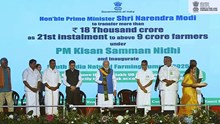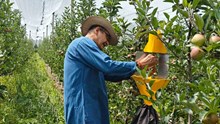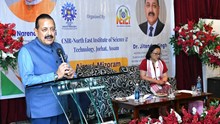
The Grand Festival, But Who Is Saving?
India is celebrating what the government calls the “GST Festival of Savings.” Posters, billboards, and digital ads have flooded every corner of the country—from dusty village roads to gleaming metro stations. Yet amid this festive noise, one question remains: who is actually saving, the government or the farmer?
Following the 56th meeting of the GST Council, the government announced a rationalized “GST 2.0.” But a closer look at the new rate structure shows that the farm sector has largely been left out of the celebration.
Small Farmers, Heavy Taxes
GST on tractor tyres has been reduced from 28% to 18%, but for small farmers who use mini-tillers, power sprayers, and small water pumps, the rate remains unchanged. Crucial items such as water pumps, rice mills, brush cutters, hedge trimmers, chainsaws, and pole pruners still attract high GST. These are exactly the tools that enable small and marginal farmers to mechanize their farms and reduce dependence on labour.
For large farmers buying tractors, it’s relief; for small farmers buying a pump, it’s a penalty. India’s agricultural landscape is dominated by small and marginal farmers, over 84% of cultivators, with average landholdings under two hectares. Production costs have risen 12–15% annually, while incomes have barely grown by 2–3%. Imposing 18% GST on essential farm tools is not taxation, it is punishment for survival.
Rising Costs, Shrinking Work Hours
The cost of cultivation has surged. Fertilizers, seeds, pesticides, and diesel have all shot up, diesel alone by 45% in five years, fertilizers nearly doubled. Heat stress caused by global warming has reduced productive working hours. Where workers once toiled 8–9 hours daily, extreme heat now limits effective work to barely five hours, forcing farmers to hire extra labour and increase costs by 30–40% per acre.
Small-scale mechanization is no longer a luxury; it is a necessity. Yet the government treats it as a taxable commodity rather than a developmental priority.
Input Credit Trap
Another issue lies in the accumulated input tax credit. Dealers who purchased goods at 18% GST before the rate cut must sell them at 5%, but no refund is provided for the 13% difference. Traders pass the loss to farmers, turning the “Festival of Savings” into an indirect tax burden.
Ease of Farming vs. Ease of Doing Business
While the government talks of “Ease of Doing Business,” India urgently needs Ease of Farming. Industries get GST reductions; why not farmers? Globally, agriculture is treated as essential, France taxes farm machinery at 5.5%, Japan exempts essential tools, and most EU nations keep farm implements in the lowest tax bracket. In India, farm tools are still treated as luxury goods.
Paper Promises and Policy Paralysis
The recent GST reduction on tractor parts is welcome, but non-tractor machinery, pumps, diesel engines, gearboxes, remains at 18%. The selective relief widens inequality between large mechanized farmers and smallholders. Subsidies are offered, only to be clawed back through GST.
Real Numbers
According to the National Sample Survey Office, the average Indian farming household earns Rs 10,218 per month and spends Rs 9,940, leaving a meagre Rs 278 in savings. With 18% GST on essential tools, even that small saving disappears. The “festival of savings” may fill billboards, but the farmer’s ledger continues to bleed red.
A Call for Common Sense
The Akhil Bharatiya Kisan Mahasangh (AIFA) demands:
-
Full GST exemption for all agricultural implements, inputs, and spare parts.
-
If full exemption is not feasible, a uniform 5% GST slab.
-
Amendment of input tax credit rules to refund previous purchases at higher GST rates.
Farmers are not just tax payers, they are tax generators, feeding both the people and the economy. If the farmer’s pocket remains empty, the nation’s markets will not stay full. “Annadata Sukhi Bhava”, may the food-giver be prosperous, is not just a blessing; it is the foundation of India’s economic survival.
















